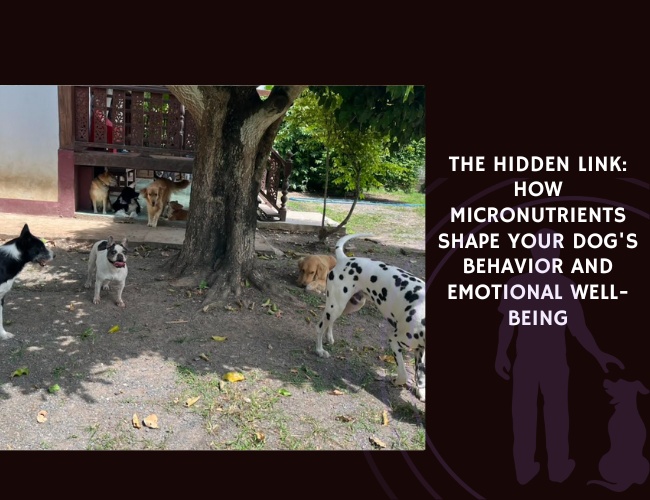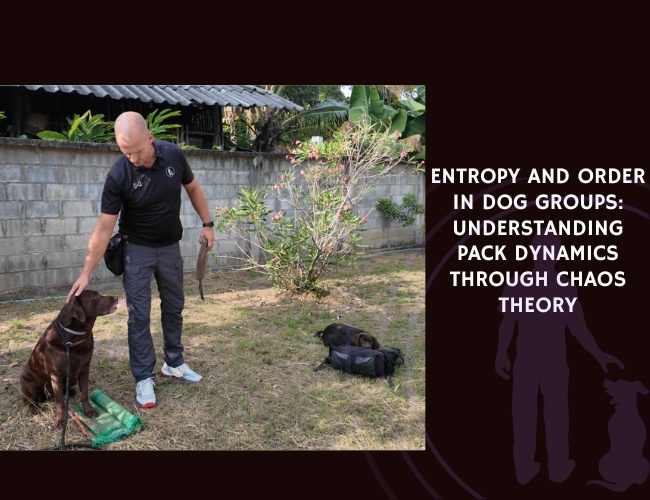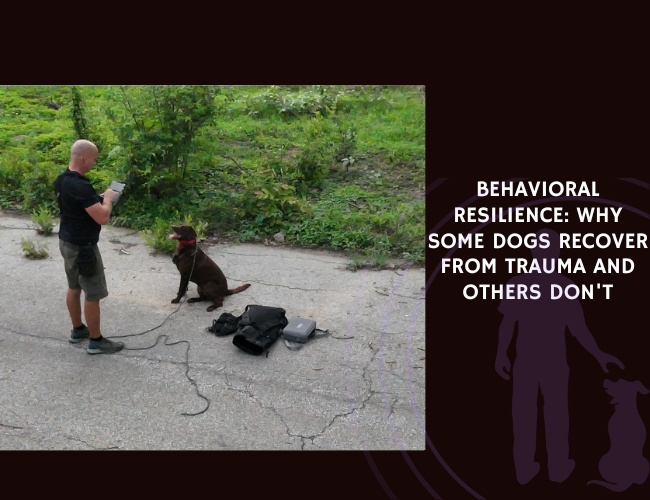Origins and Evolution of the Alpha Theory
Early studies of captive wolves led to misunderstanding of pack dynamics
The alpha concept, which suggests a strict hierarchical structure within wolf packs, emerged from the study of captive wolves. Researchers observed that these captive wolves exhibited dominant behaviors, leading them to conclude that wolf packs consist of aggressive hierarchies. This notion was popularized in the 1970s and reinforced the belief that there was always an “alpha” individual dominating the group. However, it is essential to understand that these studies were conducted under artificial conditions, which influenced the wolves’ behavior in ways that would not typically occur in the wild.
Studies of wolves in captivity were flawed as these wolves were not natural family units but were instead groups of unrelated individuals forced to live together. These artificial pack settings meant that dominance and aggression were far more prevalent, as unrelated wolves competed for resources and control. This artificial situation significantly skewed the understanding of wolf social structures and led to the development of the dominance theory.
Wild wolf packs actually function as cooperative family units
Contrary to initial beliefs, research on wolves in their natural habitats reveals that wild wolf packs usually function as cooperative family units. Wild packs typically consist of a mated pair, often termed the breeding pair, and their offspring. Leadership within these packs is not about dominance but about parental guidance and cooperation to ensure the survival and success of the family unit.
Studies indicate that in such family structures, the so-called “alpha” wolves are the parent wolves who lead through experience and nurturing rather than sheer domination. These parent wolves act as caretakers, protecting and providing for their young while teaching them essential survival skills. Pack members collaborate in hunting and caring for pups, showcasing a social dynamic based on cooperation and mutual aid rather than aggressive dominance.
How these misconceptions were wrongly applied to domestic dogs
These early and fundamentally flawed interpretations of wolf pack dynamics were misapplied to domestic dogs, resulting in the dominance theory in dog training. The assumption was that dogs, being descendants of wolves, would naturally exhibit similar dominance hierarchies. Thus, it was believed that effective dog training required owners to assert themselves as the “alpha” to establish control over their pets.
The application of this theory has led to various dominance-based training methods, often advocating for punitive measures to correct what were perceived as attempts by dogs to assert dominance over their owners. For example, behaviors such as jumping up, pulling on the leash, or even barking were misinterpreted as attempts to dominate, leading trainers to recommend harsh corrections to “put the dog in its place”.
However, modern research profoundly contradicts these views, showing that domestic dogs have evolved alongside humans to develop unique social structures that emphasize cooperation over competition. Dogs form complex relationships with humans and other dogs that are not based solely on dominance hierarchies. Recognizing these nuances is crucial for developing more effective and humane training methods.
Understanding the true nature of dog behavior and their social structures can dispel these myths and lead to more compassionate approaches to training and dog management. This shift in understanding paves the way for training methods that focus on building trust and fostering mutual respect, rather than relying on outdated and often harmful dominance-based tactics.
As we delve deeper into understanding modern dog behavior, it’s essential to address why these outdated theories still persist, and how we can bridge the gap between scientific understanding and public perception. This will enhance both our relationship with our canine companions and the effectiveness of our training methodologies.
Why the Dominance Theory Persists
Appeal of Simple, Authoritative Explanations to Dog Owners
Despite advancements in understanding canine behavior, the dominance theory continues to have a strong appeal among dog owners. The reason lies in the simplicity and authority that the theory provides. It offers a straightforward explanation for a wide range of dog behaviors, making it easy for owners to grasp and apply. The notion of a clear hierarchy, with the owner as the “alpha,” simplifies the complexities of dog training and behavior management, giving the illusion of control and predictability.
However, this simplicity often comes at the expense of misinterpreting dog behavior. What dominance theory overlooks is the nuanced and context-driven nature of these interactions. Correctly understanding and managing dog behavior requires patience and a deeper understanding of the individual dog’s needs and experiences. By favoring simplified explanations, owners may inadvertently contribute to behavioral issues rather than resolving them.
Disconnect Between Scientific Understanding and Public Perception
The persistence of the dominance theory highlights a significant disconnect between scientific understanding and public perception. Modern research has shifted away from dominance-based interpretations, emphasizing instead the importance of cooperative relationships and context in shaping behavior. Unfortunately, these scientific advances often fail to reach the general public.
This gap is compounded by the overwhelming amount of misinformation available through various media channels. Training books, reality TV shows, and even some trainers continue to propagate the dominance narrative based on outdated studies of captive wolves. As a result, many dog owners may remain unaware of the more humane and effective methods supported by contemporary science.
Popular but Outdated Training Methods Still in Use
Training methods grounded in dominance theory remain popular because they have been ingrained in the culture of dog training for decades. Techniques that emphasize asserting authority over the dog—such as physical corrections, alpha rolls, and the use of choke chains—have been passed down through generations of dog owners and trainers. These methods are deeply rooted in the perceived need to “show the dog who is boss.”
However, research has shown that these punitive measures can lead to increased aggression, fear, and anxiety in dogs. Instead of fostering a trusting relationship, they often create an environment of stress and conflict.
To move away from these outdated practices, it is crucial to educate dog owners on the benefits of positive reinforcement and understanding the environmental and psychological factors that influence dog behavior. Shifting the focus from dominance to cooperation and mutual respect can lead to more effective and compassionate training approaches.
The journey to better understanding dog behavior involves dispelling long-held myths and embracing the wealth of knowledge provided by modern research. By bridging the gap between science and public perception, we can foster healthier relationships between dogs and their owners, paving the way for more effective strategies based on mutual respect and understanding.
Changing these entrenched beliefs will take time and effort, but the rewards of a more informed and empathetic approach to dog training are well worth it.

Modern Understanding of Dog Behavior
As we advance our understanding of dog behavior, it’s crucial to recognize that the context plays a significant role. This section will explore several factors that shape how dogs behave, including the context-driven nature of their actions, the influence of resources and the environment, and the impact of their individual histories and learned behaviors.
Context-Driven Behavior
Dog behavior is heavily influenced by the immediate context. Factors such as the presence of other animals, the situation they find themselves in, and even the emotional state of their human companions can significantly impact how they act. Contrary to the simplistic dominance model, modern behavioral science emphasizes that dogs respond to complex interactions around them. For instance, a dog might growl at another dog not out of dominance but as a reaction to feeling threatened or anxious in a particular scenario.
Influence of Resource Availability and Environmental Factors
Resources, such as food, toys, and sleeping areas, can also impact dog behavior. When resources are scarce or perceived to be, it can lead to conflicts. These are often misinterpreted as dominance struggles, but they are more accurately viewed as competition for essential resources.
Dog parks are excellent examples of environments where resource availability plays a critical role in how dogs interact with one another. Conflicts often arise over toys or preferred spots, leading to misinterpretation of behaviors as attempts at domination. Understanding that these actions stem from resource-based competition helps in managing and mitigating potential conflicts.
Additionally, environmental factors such as changes in routine, new visitors, or even loud noises can cause stress and anxiety in dogs, leading to behaviors that may be misinterpreted as dominant. Recognizing these influences can help in providing a more supportive and understanding approach to managing dog behavior.
Importance of Individual Dog Histories and Learned Behaviors
Each dog is unique, with their behavior shaped by their individual histories and experiences. Past experiences, both positive and negative, play a crucial role in how they respond to similar situations in the future. For example, a dog that has had negative encounters with other dogs might act aggressively when meeting new ones, not out of dominance, but out of fear or anticipation of a negative experience.
Learned behaviors also play an essential role. Dogs learn from their interactions with humans and other animals, adapting their behavior based on the outcomes of these interactions. A dog that has learned that certain behaviors get them rewarded is likely to repeat those behaviors, while those that result in negative outcomes will be avoided. This underscores the importance of positive reinforcement in training and behavior management, as it helps shape desirable behaviors through rewarding experiences.
Understanding the context-driven nature of canine behavior, the impact of resource availability, and the importance of individual histories and learned behaviors helps break down the simplistic dominance myths. It enables dog owners and trainers to approach behavior management with empathy and insight, leading to healthier and more effective interactions.
Transitioning from this understanding provides a pathway to better training and management techniques, which move away from dominance-based corrections and instead focus on identifying and addressing the root causes of behaviors. This compassionate approach is at the heart of modern behavioral science.
Common Misconceptions About Dominance
Misinterpreting Normal Dog Behaviors as Dominance Issues
One of the most pervasive myths in dog training is the idea that normal behaviors, such as barking, jumping, or even resource guarding, are signs of dominance. This misunderstanding stems from outdated dominance theories that simplify dog behavior into a hierarchy-based system. In reality, dogs exhibit a wide range of behaviors influenced by various factors, including their environment, experiences, and individual personalities.
Labeling a dog as ‘dominant’ because it barks at strangers or guards its food ignores the underlying reasons for these actions. Barking might be a response to fear or excitement, while resource guarding can be a sign of anxiety or a learned behavior from past experiences. By not addressing these root causes, we risk applying incorrect and often punitive measures that can exacerbate the problem rather than resolve it.
Resource Competition vs. Dominance in Dog Interactions
It is common to see dogs compete for resources such as toys, food, or attention. These competitive behaviors are frequently mistaken for attempts at dominance. However, modern behavioral science reveals that these interactions are more accurately described as resource management rather than dominance displays.
Dogs, like many social animals, negotiate access to valuable resources. This negotiation process involves various behaviors such as growling, body blocking, or staring, which are not inherently about establishing dominance but about communicating needs and establishing boundaries. For instance, conflicts at dog parks over toys or space are typically about immediate resource competition rather than hierarchical status.
Understanding that dogs interact in a context-driven manner helps us see that they are not vying for alpha status but are merely managing their environment in real-time. Recognizing this distinction allows for better management strategies that focus on fair resource distribution and mitigating stress rather than enforcing a false notion of dominance.
How Oversimplification Leads to Ineffective Training Approaches
Oversimplifying dog behavior into dominance-related issues leads to ineffective and sometimes harmful training practices. The dominance theory posits a need for owners to assert themselves as the ‘alpha’ through punitive measures. This approach can damage the dog-owner relationship and fail to address the actual causes of the behavior.
For example, a dog that pulls on the leash is often said to be showing dominance. However, leash pulling is usually a sign of excitement, lack of training, or simply the dog’s desire to explore its surroundings. Addressing this behavior with punitive “alpha” tactics, such as leash yanking or verbal reprimands, can increase anxiety and lead to greater behavior problems.
Effective training approaches focus on understanding the context and triggers of behaviors. By using positive reinforcement, we encourage desirable behaviors and build trust between the dog and the owner. This method is based on rewarding the dog for good behavior, which strengthens the bond and leads to long-term behavioral improvements.
Understanding the complexities of dog behavior requires moving beyond outdated dominance theories. Focusing on the context and motivators behind a dog’s actions allows for more effective and humane training solutions. This shift in perspective not only benefits the dogs but also enhances the relationship between them and their owners.
Scientific Evidence for Modern Approaches
Research Showing Distinct Evolution of Domestic Dog Social Structures
Modern behavioral science has shifted significantly away from the dominance theory that once defined our understanding of dog behavior. This is largely due to research showing that domestic dogs have evolved distinctly from their wolf ancestors, developing social structures based on cooperation and communication rather than rigid hierarchies. Early assumptions made from observations of captive wolves suggested strict dominance hierarchies, but recent studies debunked these outdated views.
For example, wild wolf packs are typically family units where leadership and roles are fluid and based on cooperation instead of dominance. This family-based dynamic greatly contrasts the competitive and hierarchical structure once believed to be common. Essentially, dogs have evolved to adapt to human environments, leading to differences in behavior compared to wolves.
Evidence of Cooperative Rather Than Hierarchical Relationships
One significant piece of evidence supporting this more cooperative model comes from studying free-ranging dog populations. These studies reveal that dog interactions are far more context-dependent and cooperative than hierarchical. Free-ranging dogs often form loose, fluid social groups where relationships are negotiated based on mutual benefits and resource management rather than dominance.
A great example of this cooperative behavior is observed in shared food resources. Instead of fighting for dominance, dogs often establish informal agreements about resource sharing, showing that their interactions are primarily driven by cooperation.

Importance of Studying Free-Ranging Dogs for Behavioral Insights
Studying free-ranging dogs has provided invaluable insights into the natural social structures and interactions of domestic dogs. These dogs live in environments where human intervention is minimal, offering a more authentic look at their behavior. Research carried out on free-ranging populations has consistently shown that these dogs engage in complex social behaviors, such as forming alliances and sharing resources, which are based on mutual cooperation rather than rigid dominance.
Investigating free-ranging dogs helps to dispel the myths perpetuated by the dominance theory, demonstrating that domestic dogs have adopted more adaptable and context-driven social structures. This information is crucial for developing effective training practices and understanding the true nature of canine behavior.
These insights indicate a pressing need to shift public perception and dog training methods away from dominance-based approaches towards strategies rooted in mutual understanding and cooperation. By fostering this contemporary perspective on dog behavior, we can enhance our relationship with our canine companions, promoting a more harmonious and effective training experience.
Staying updated with ongoing research and fostering a better understanding of a dog’s natural behavior will help dog owners and trainers alike to create more positive interactions and training environments. This modern approach not only aligns closer to the dog’s evolved social structure but also advocates a more humane and compassionate method to canine management.
Better Approaches to Training and Management
Focus on Understanding Behavioral Contexts and Triggers
One of the key aspects of modern dog training is understanding the contexts and triggers that drive a dog’s behavior. Unlike the outdated dominance theory, which attributes all undesirable behaviors to a dog’s innate desire to assert authority, modern science emphasizes the importance of context. Factors such as resource availability, environmental influences, and individual histories play a crucial role in shaping how dogs behave. Recognizing these elements allows trainers and owners to address the root causes of behaviors rather than merely treating the symptoms.
For example, a dog’s aggressive behavior at a dog park might result from competition for resources like toys or space rather than an inherent desire to dominate other dogs. By observing the environmental cues and understanding the context of these interactions, owners can develop more effective strategies to prevent and manage such conflicts.
Emphasis on Positive Reinforcement
Adopting positive reinforcement techniques is a significant departure from the dominance-based corrections favored by earlier training methods. Positive reinforcement involves rewarding desirable behaviors to encourage their recurrence. This method fosters a cooperative relationship between dogs and their owners, making training a more enjoyable and productive experience for both parties.
Positive reinforcement can take many forms, such as treats, praise, or playtime. The key is to provide immediate and consistent rewards for behaviors we want to encourage. For instance, if a dog sits on command, giving a treat right away reinforces this action, making the dog more likely to repeat it. This approach not only strengthens the desired behavior but also builds trust and strengthens the bond between the dog and owner.
Importance of Addressing Root Causes Rather Than Applying Punitive Measures
Punitive measures, such as yelling or physical corrections, have long been used in dog training under the dominance theory. However, these methods can be harmful, leading to increased anxiety, fear, and aggression in dogs. Instead of resorting to punishment, it’s crucial to understand the underlying causes of a dog’s behavior and address these root issues.
For example, if a dog exhibits destructive behavior when left alone, this might be a sign of separation anxiety rather than a challenge to the owner’s authority. Addressing the anxiety through gradual desensitization, creating a calm environment, and providing mental stimulation can help alleviate the behavior in a more humane and effective manner.
By focusing on the root causes of unwanted behaviors, trainers and owners can develop tailored strategies that address the specific needs and triggers of each dog. This individualized approach leads to more successful and lasting behavior modification.
Understanding the context and underlying motivations for a dog’s behavior is paramount. Rather than viewing dogs through the outdated lens of dominance, modern training methods emphasize empathy, positive reinforcement, and a comprehensive understanding of canine psychology. This shift not only improves the effectiveness of training but also enhances the well-being of our beloved companions.

Unraveling the True Nature of Canine Companions: A New Era of Understanding
As we’ve explored, the alpha and dominance theory, once widely embraced, is now fundamentally challenged by modern science. This shift in understanding, from aggressive hierarchies to cooperative family units, reshapes our approach to our canine companions.
Imagine the potential of transforming your relationship with your dog, not through dominance, but through mutual respect and cooperative leadership. Picture a dog that responds not out of fear or submission, but out of trust and love—a partnership built on understanding and patience.
Are you ready to step into this new era of dog behavior understanding?
Join us in the next series where we delve into practical applications of these findings. Learn science-backed methods to enhance your bond with your furry friend, fostering a relationship grounded in cooperation and love.










